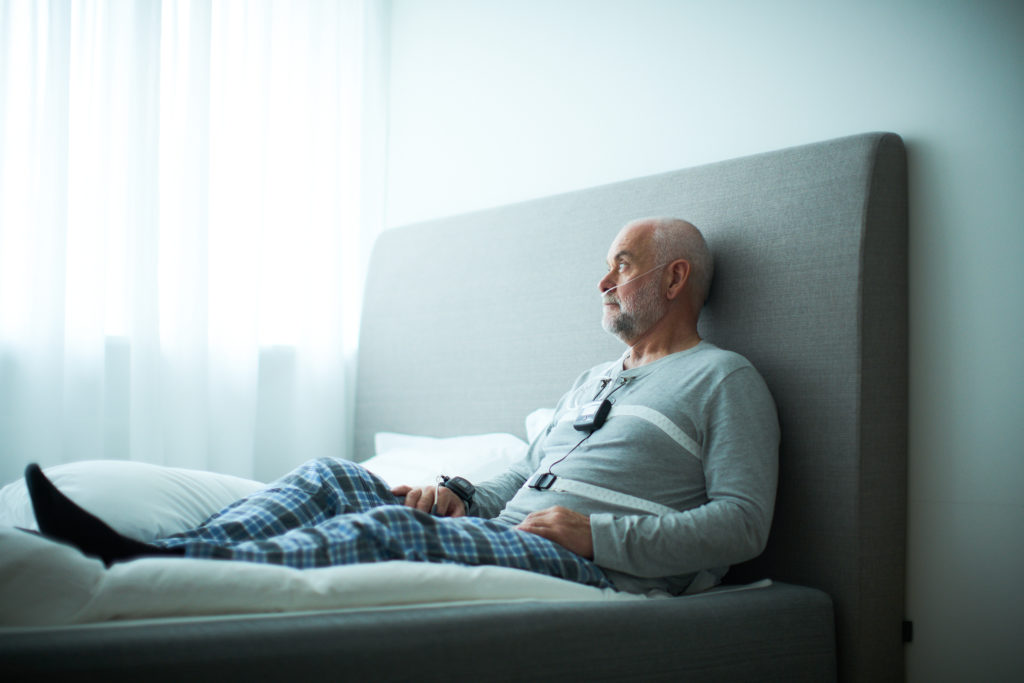After the COVID-19 pandemic swept over the globe, no one could have predicted what lasting effects sleep medicine providers would see years later, but as we approach the four-year anniversary of the virus’s emergence, it’s due time that we look back and reflect.
Despite the devastation that COVID-19 brought, the virus also inspired rapid evolution in the field of sleep medicine. When COVID-19 hit, sleep labs quickly shut down in-lab operations and some pivoted to meet their patients’ needs remotely, shipping out home sleep tests and quickly launching telehealth platforms seemingly overnight.1 The rise of telemedicine appeared to spread as fast as the virus itself. Home-based sleep testing increased significantly and durably and has been associated with faster time to treatment than initial in-lab testing.2
“Since the pandemic, we have done a complete 360,” says Jennifer Jones, RPSGT, RST, a lead sleep technologist at FusionSleep in Georgia.
A prime example of the successful implementation of telemedicine was seen at FusionSleep, a business unit of Nox Health, which runs two sleep labs with a total of 12 beds. There, when COVID surfaced in the United States, the sleep lab launched a telemedicine practice in just four days using Zoom. The sleep medicine providers went from seeing zero telemedicine patients to seeing only telemedicine patients. “We went from some home sleep studies to doing all home sleep studies within a couple of days,” says Jones.
Since those early pandemic days, FusionSleep’s telemedicine practice has continued to expand. Just before the pandemic, the practice only saw patients within a 30-mile radius of either of their Georgia locations. Now, the providers at FusionSleep see patients all throughout the state of Georgia and can consult with patients, ship the Nox T3s home sleep tests directly to their homes, and set patients up on CPAP therapy — all remotely.
“The world changed. We had to make it happen, so we did,” says FusionSleep’s Executive Vice President of Operations Shawn Roberts. FusionSleep providers can now reach more patients than ever before, and they are reaching many patients who might not have otherwise had access to care. FusionSleep even launched an innovative program within Publix, in which anyone doing their grocery shopping can stop into a digital kiosk to fill out a sleep survey. If needed, at the end of the survey, the person may be referred to a FusionSleep clinic for a sleep evaluation.
“This, to me, is an example of our reach because we are now in 170 Publix grocery stores across the state of Georgia,” says Roberts.
As of December of 2023, approximately 97% of FusionSleep’s patient visits are administered via telemedicine and many of them are “self-referred” via the Publix surveys. As many as 50% to 75% of those patients receive a home sleep test with the Nox T3s device, the only home sleep testing equipment that is used by the Georgia clinics.
Overall, FusionSleep has continued to keep telemedicine rates up and is a prime example of a sleep medicine-telemedicine success story. The business has not seen the telemedicine patient appointment rate drop below 80% at any time since the pandemic hit, according to reports from the sleep lab.
“We are now seeing more home sleep testing than ever before,” says Roberts. “I think sleep is on the frontlines more than ever before and our volume has increased a lot there because of the visibility of sleep
health has been elevated.”
Currently, in addition to running in-lab polysomnography sleep studies with the Nox A1s, FusionSleep is administrating approximately 275 home sleep tests per month. The influx of home sleep testing has changed the dynamics of how the sleep lab staff manage their work. Clinicians don’t just need to interact with patients; they also need to provide technical support and give clear instructions remotely.
FusionSleep uses a software system that automatically creates a link that is sent to the patient. All the patient has to do is just click on the link to open a web browser to go straight to the virtual visit. The platform is easy and accessible for all patients, even those who are not technologically savvy. “There has definitely been an improvement since the pandemic,” says Shakyra Jacobs, RPSGT, FusionSleep lab manager. “We can now accommodate patients who don’t want to come into the sleep lab, and we can reach a wider range of people.”
“Now, I am running a clinic, and it is in the cloud,” says Roberts. “Telemedicine is here to stay.”
This article was originally published in SleepLab magazine.
References:
1. Khosla S, Beam E, Berneking M, Cheung J, Epstein LJ, Meyer BJ, Ramar K, So JY, Sullivan SS, Wolfe LF, Gurubhagavatula I. The COVID-19 pandemic and sleep medicine: a look back and a look ahead. J Clin Sleep Med. 2022 Aug 1;18(8):2045-2050.
2. Powell AC, Horrall LM, Long JW, Gupta AK, Gitnacht D. Sleep testing during the pandemic. Sleep Med. 2023 Jan;101:375-383. doi: 10.1016/j.sleep.2022.11.008. Epub 2022 Nov 22.
Topic: Industry News





